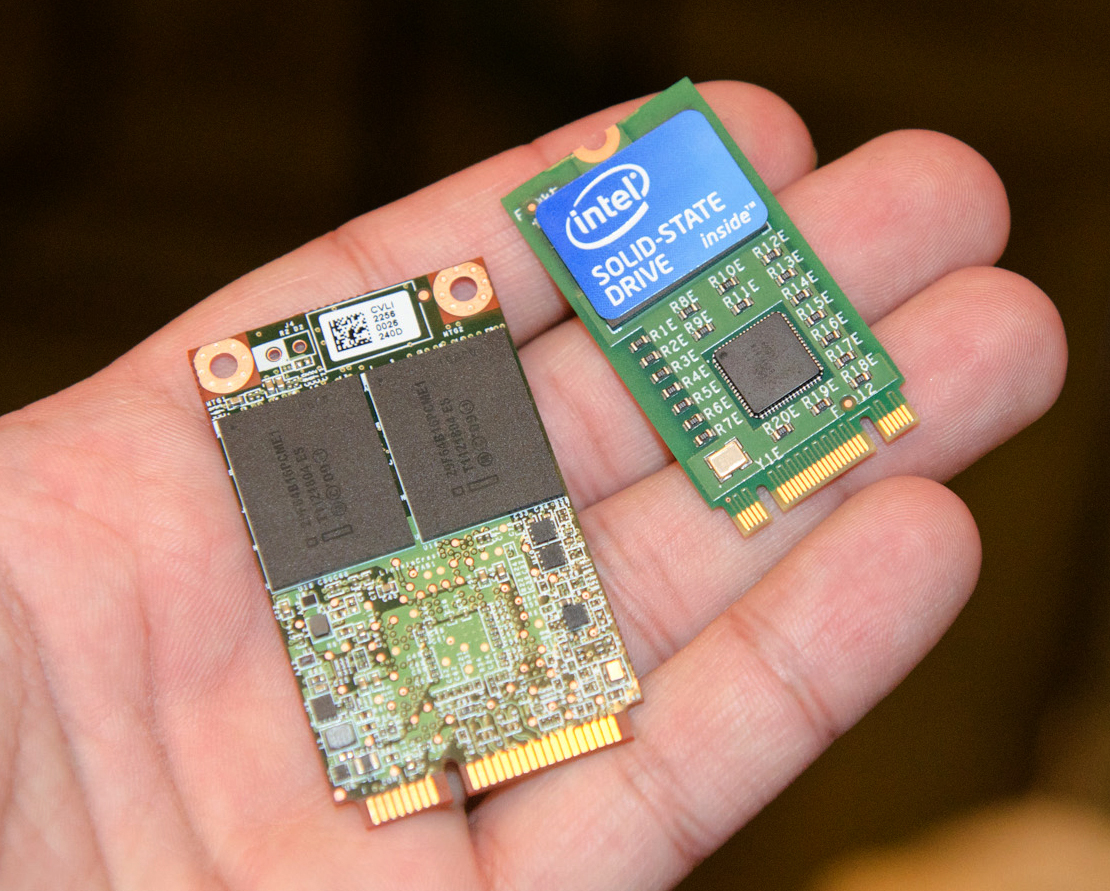
m-SATA left, M.2 right
Posted on 08/16/2015 4:56:03 PM PDT by TigerLikesRooster
Samsung unveils 2.5-inch 16TB SSD: The world’s largest hard drive
Third-generation 3D V-NAND is now up to 48 TLC layers and 256Gbit per die.
by Sebastian Anthony - Aug 13, 2015 9:16pm JST
At the Flash Memory Summit in California, Samsung has unveiled what appears to be the world's largest hard drive—and somewhat surprisingly, it uses NAND flash chips rather than spinning platters. The rather boringly named PM1633a, which is being targeted at the enterprise market, manages to cram almost 16 terabytes into a 2.5-inch SSD package. By comparison, the largest conventional hard drives made by Seagate and Western Digital currently max out at 8 or 10TB.
The secret sauce behind Samsung's 16TB SSD is the company's new 256Gbit (32GB) NAND flash die; twice the capacity of 128Gbit NAND dies that were commercialised by various chip makers last year. To reach such an astonishing density, Samsung has managed to cram 48 layers of 3-bits-per-cell (TLC) 3D V-NAND into a single die. This is up from 24 layers in 2013, and then 36 layers in 2014.
(Excerpt) Read more at arstechnica.co.uk ...
That’s a spicy meat-a-ball!!! I want to plug that puppy into my new HTPC.
I believe you are correct.
My IBM PC-1 (still have it) came with 16kB of DRAM and cassette basic and had chip sockets so you could increase it to 64kB I believe. Then with the addition of other cards and a multipurpose card (I forgot the name of it) you could fill it out to the maximum of 640kB. That multipurpose card also provided a battery backed up real time clock so you didn’t have to type in the time and date every time you booted the machine...
It had dual monitors, a monochrome and CGA/color monitor.
It had dual 5-1/4” 360k double sided floppy drives.
A little later I got a 20 MB hard drive and 8087 coprocessor for it. I wrote an assembly language floating point math library using the 8087 coprocessor that increased the math computational speed by a factor of 7 doing linear circuit analysis... It was really cool...

m-SATA left, M.2 right
Bill didn’t want to have to go find some guy who had already written OS code to handle more memory space and was 32 bit compatible.
I’m still holding out for holographic memory. Imagine, if you will, a small sphere of a fairly transparent medium. Now, picture a ‘virtual’ disk in the center of it. Rotate the sphere one degree, and you have another, repeat 360 times. If it were the size of a cd/dvd and being written to at blue-ray density, of about 50gb, you’d be looking at 2.5 tb. Now, consider that you still have a 3rd dimension to work with. That works out to 125 tb. Now, the less sepaeation between separate disks, the more disks you have.
An interesiting concept to me, even though there are obvious issues.
I fully expect to be able to buy a SSD with a petabyte of storage before too long. If our copyright weren’t so hopelessly screwed up, you’d be able to have just about every song ever written on your drive without using lossy compression.
Imagine the bloat in future operating systems to eat up as much of that as possible.
Back in those days I was displaying simulations of WWIII on Megatek graphics workstations.
Has this been posted yet...
say NO to Windows 10
I didn't have much money to spend on hardware in the early 80's. My first terminal was the H-9. It was 12 lines of 40 characters with uppercase only. I wire-wrapped additional video memory, fixed the clocks and added a character generator ROM with lowercase. For about $20 and 3 hours of labor, it was upgraded to 24 lines x 80 chars. Not much different than what I use daily to write software.
The Software Toolworks C compiler worked pretty well in CP/M. It took 20 minutes to compile the word count code from UNIX (wc.c). After about 3 weeks of serious code development in C, the 8" drive head banged off of the support arm. It was time to move on to hard disk to stay in the game.
Neat. Amazon has a Samsung 1TB for $520 that’s SATA III! I could just plug that sucker in tonight...
All of it!
Back in my younger days, our projects usually used two 300 Meg hard drives. They were $50K each at the time. Early to mid eighties.
A steal at twice the price! Was that the refrigerator sized monsters?
Freudian slip?
The rather boringly named PM1633a, which is being targeted at the enterprise market, manages to cram almost 16 terabytes into a 2.5-inch SSD package.
...
Now all the Kardashian episodes can fit on a single SSD.
Word! ;)
How quaint. I'm currently using 6 terabyte SSD's for my Macs. Of course they're 3.5 inch. I have 2.5 inch SSD's internally, 500GB and 750GB. I think in five years the hard drives will be much larger than you think.
Yup, and it’s killing my industry.
I’ve been designing hard drives for over 30 years, mostly small form factor drives (0.8” ->2.5”) for mobile apps. Mobile’s going SSD, so we’re relegated to desktop & server apps.
There’s a market out till longer than I’ll be working, but the industry has settled on 1.1T per platter. The +10x per year slope we were on is gone. Now it’s about cost reduction and improved reliability. No new product development.
Now moving from development to manufacturing, which is great, till something doesn’t work, “we need those development engineers back” been there before.
Hope I’ll last till retirement.

Disclaimer: Opinions posted on Free Republic are those of the individual posters and do not necessarily represent the opinion of Free Republic or its management. All materials posted herein are protected by copyright law and the exemption for fair use of copyrighted works.